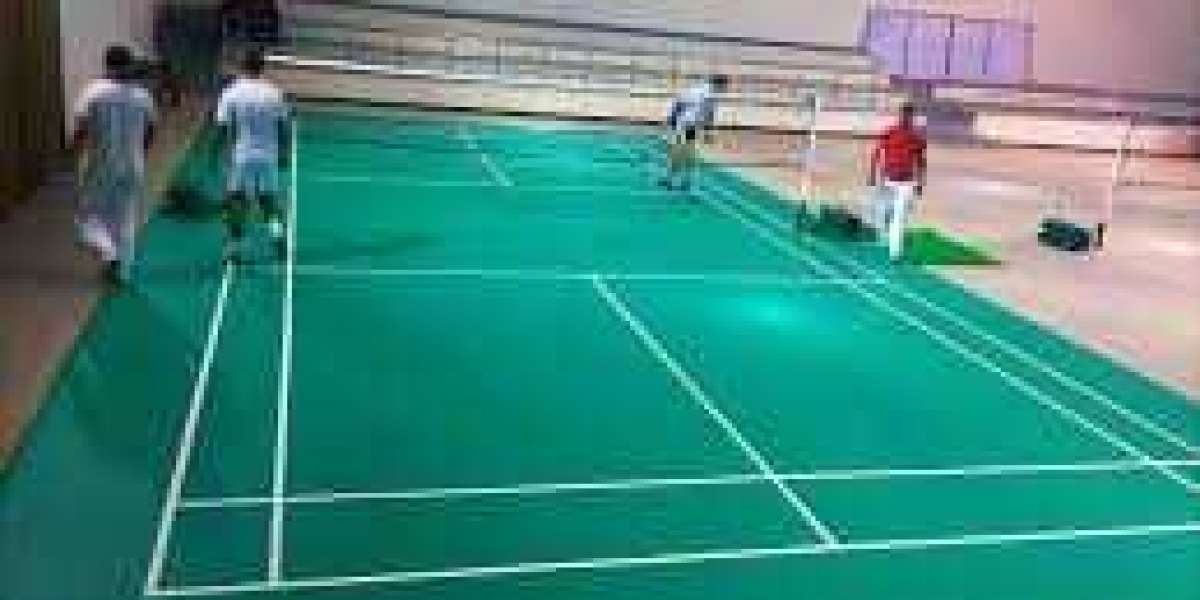In this guide, we’ll walk you through why a synthetic badminton court is a smart choice, what makes it different from other surfaces, and the official badminton court size to ensure you’re playing the game the right way.
Why Choose a Synthetic Badminton Court?
Traditionally, badminton courts were made from wooden flooring. While wood offers a classic look, it comes with higher maintenance needs and can be less durable in certain climates. That’s where a synthetic badminton court comes in.
Benefits of a Synthetic Court Surface:
- Durability – Synthetic surfaces are built to last. They can handle heavy use without showing wear and tear as quickly as wooden or cement courts.
- Low Maintenance – Forget regular polishing and heavy upkeep. A synthetic badminton court only needs basic cleaning to stay in top shape.
- Better Grip Shock Absorption – Synthetic materials provide excellent traction, reducing the risk of slips while cushioning players’ joints during high-intensity games.
- Weather Resistance – Unlike wood, synthetic surfaces are not as easily damaged by humidity or temperature changes, making them perfect for both indoor and covered outdoor courts.
Because of these benefits, many sports academies, schools, and professional arenas are making the switch to synthetic flooring.
Understanding the Official Badminton Court Size
While having the right surface is essential, the dimensions of your court are just as important. An incorrectly sized court can affect gameplay and may not meet competition standards.
According to the Badminton World Federation (BWF), the official badminton court size for doubles play is:
- Length: 13.4 meters (44 feet)
- Width: 6.1 meters (20 feet)
For singles matches, the width is slightly narrower:
- Length: 13.4 meters (44 feet)
- Width: 5.18 meters (17 feet)
Other key measurements include:
- Net Height: 1.55 meters (5 feet 1 inch) at the edges and 1.524 meters (5 feet) in the center.
- Service Lines: Positioned 1.98 meters (6 feet 6 inches) from the net for doubles, and a long service line 0.76 meters (2 feet 6 inches) from the back boundary for singles.
By sticking to these official dimensions, you ensure fair gameplay and make it easier for players to transition between friendly matches and professional competitions.
Indoor vs. Outdoor Considerations
When installing a synthetic badminton court, you need to think about whether it will be indoors or outdoors.
- Indoor Courts – Ideal for consistent conditions, avoiding wind or rain interference. Synthetic flooring works perfectly indoors, providing a professional playing experience year-round.
- Covered Outdoor Courts – If you’re short on space indoors, you can opt for a roofed outdoor court with synthetic flooring. This way, you still protect players from direct sun and rain while maintaining good surface quality.
Keep in mind that outdoor courts may require additional care to prevent dust buildup, which can affect grip.
Cost and Installation
The price of a synthetic badminton court varies depending on material quality, thickness, and brand. While synthetic flooring may cost more initially compared to cement or wood, its durability and low maintenance often make it more cost-effective in the long run.
Installation should always be handled by professionals to ensure the court is level, markings are accurate, and the surface is properly secured. Poor installation can lead to uneven bounce, slippery spots, or even injuries.
Tips for Maintaining Your Synthetic Court
Even though synthetic surfaces are low maintenance, a little care goes a long way:
- Sweep the court regularly to remove dust and debris.
- Avoid using harsh chemicals that could damage the surface.
- Keep shoes clean before stepping on the court to maintain grip quality.
- Inspect lines and markings periodically to ensure they remain visible.
Final Thoughts
Whether you’re building a recreational facility or setting up a court for competitive play, the combination of a synthetic badminton court and correct badminton court size will give players the best experience possible.
Synthetic surfaces offer durability, safety, and comfort, while following official dimensions ensures fair play and professionalism. In the long run, this combination not only enhances the game but also saves you money and effort in maintenance.
Badminton is more than just a sport—it’s a community activity, a fitness booster, and a source of endless fun. By investing in the right court, you’re helping that community grow stronger, one match at a time.



